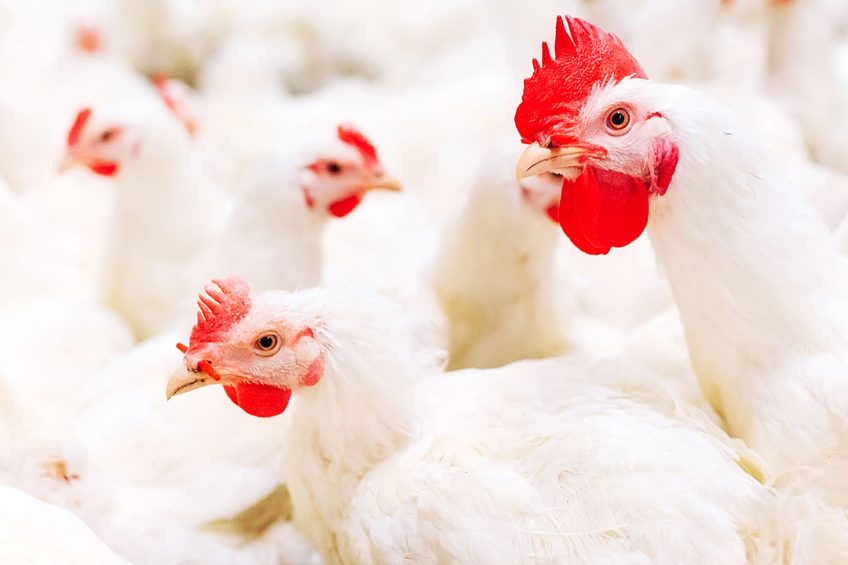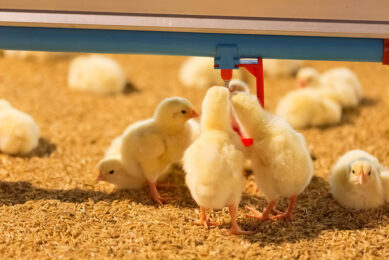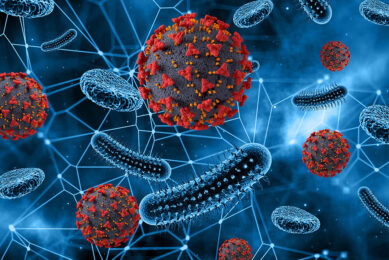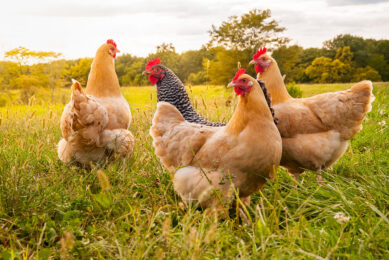Paving the path to a healthy gut

Gut health is crucial for optimal zootechnical performance and is determined by the reciprocal interaction between the mucosa, the diet composition and the microflora.
The intestine is the most important interface between the animal and the environment. The intestinal epithelium acts as a natural barrier against pathogenic bacteria and toxic substances that are present in the intestinal lumen. Stressors, pathogens, and chemical substances cause disturbances that may alter the permeability of this natural barrier, facilitating the invasion of pathogens and the ability to digest and absorb nutrients, and leading to chronic inflammatory processes. Consequently, there is a decrease in the villi length, an increase in the cell turnover and a decrease in the digestive and absorptive activities. Promoting a healthy and large absorption surface therefore results in optimal nutrient absorption.
Microbial ecosystem
A healthy gut is one that has a stable and diverse microbial ecosystem. Microbial colonisation of the digestive tract of the chickens evolves very rapidly after hatching and achieves its functional capacity, including optimal digestion and fermentation of nutrients, during the first week. As chickens age, changes in environmental conditions in different segments of the intestine such as pH, nutrients and oxygen tension result in the development of a specific bacterial community for each intestinal compartment. A typical adult gut microbiota consists of more than 1012 bacteria and is established within maximum 3 weeks. The establishment of the small intestinal microbiota is faster than the caecal microbiota, but the microbial community in the caeca has greater richness and diversity in comparison to the ileal community. The more diverse and richer the microbiome, the healthier the animal. To ensure the microbial flora develops to a healthy and diverse bacterial population, it is of utmost importance to control pathogens as soon as possible from the stomach and let the beneficial bacteria flourish.
Diet
As the ingested nutrients can play a role in the development and functionality of the gastrointestinal tract (GIT), diet composition can influence the development and function of the digestive system. The optimisation of the diets should consider the various aspects of gastrointestinal functionality that contribute to the improvement of animal health and reduce the use of antibiotics.
The ideal nutritional approach (feed ingredients and additives) protects the whole intestinal tract from the stomach to the end of the intestine. It balances the bacterial flora by eliminating pathogens and letting the good ones flourish. It stimulates villi growth for maximum nutrient absorption and increases enzyme secretion for better digestion. It strengthens the mucus layer to stop pathogens entering the bloodstream and triggers proper immune response to maintain optimal gut health.
Specific coated calcium butyrate
An important and essential molecule in such protective nutritional concept is butyrate. This 4-carbon short chain fatty acid (SCFA) has multiple beneficial effects on host health. Butyrate is the energy source for epithelial cells in the hindgut and is involved in the maintenance of the gastro-intestinal mucosal health. In addition, butyrate stimulates the growth and differentiation of healthy epithelial cells. Butyric acid-based products are used as a salt (sodium or calcium) or as a glyceride. By using a specific coated calcium butyrate (Butifour CCB), a slow release of butyric acid is obtained thanks to the coating and the slower solubility compared to sodium butyrate. This allows butyrate to reach the distal part of the intestinal tract.
In a trial, the effect of Butifour CCB was evaluated on the performance and gut health of broilers fed a corn soya diet. 720 ROSS 308 male broilers were divided over 18 pens with 40 broilers each and each replicate (n=9) was allocated to one of the 2 treatments. The addition of the specific coated calcium butyrate to a standard commercial diet increased significantly body weight with 3 % (+85 grams) at 39 days. The higher body weight is explained by the improved absorptive capacity expressed as villus length and villi to crypt ratio.
Figure 1 – Duodenum morphology was improved with Butifour CCB. Comparison of mean ranks for both treatments based on individual scoring of infiltrates, cysts and desquamation.

Intestinal health scores
Intestinal health is a key factor for zootechnical performance of the animals. Figure 1 shows morphological scorings at slaughter age of duodenal samples. A lower mean rank corresponds with a less severe alteration. Infiltrates stands for the amount of inflammatory cells migrated into the epithelial layer, cysts indicates the amount of cysts and abscess present in epithelial crypts, suggesting encapsulation of invasive particles, whereas desquamation describes the amount of shedding of epithelial cells in the lumen. To be able to combine all intestinal scores in one number, we allocated an impact factor for each score, based on the effect on the animal’s health status. This resulted in an overall duodenal morphology score. These morphological observations showed an improved intestinal health status with Butifour CCB.
In another broiler trial, the specific coated calcium butyrate was combined with an effective combination of short chain fatty acids (Acidal NC). In comparison with the single additive, the combination resulted in heavier birds at slaughter. In the starter phase, the FCR was significantly better for the combination. The starter phase is crucial for the development of a healthy gut. It has been demonstrated that the addition of the effective combination stimulated the proliferation of crypt cells. This is enhancing the healthy tissue turnover and leads to better absorption of nutrients. Furthermore, the combination supports the birds in developing a balanced gut microflora. A better FCR is a direct consequence of better overall intestinal health.
Improve gut health for top performance
It can be concluded that Butifour CCB is an indispensable molecule in the nutritional toolbox for optimal development and functionality of the digestive system resulting in gastrointestinal health and leading to better zootechnical performance. In addition, it has been proven that it can be used together with other short and medium chain fatty acids, as well as with natural extracts, combining different strategies to protect the entire digestive tract and to ensure good gut health to get the best performance from your broilers.
Author:
Katrien Deschepper, Technical Director, Impextraco
 Beheer
Beheer





 WP Admin
WP Admin  Bewerk bericht
Bewerk bericht